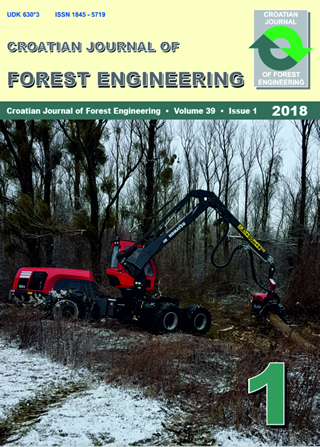Accuracy Assessment of Digital Terrain Models of Lowland Pedunculate Oak Forests Derived from Airborne Laser Scanning and Photogrammetry
volume: 39, issue: 1
pp: 12
- Author(s):
-
- Balenović Ivan
- Gašparović Mateo
- Simic Milas Anita
- Berta Alen
- Seletković Ante
- Article category:
- Original scientific paper
- Keywords:
- DTM, ALS, LiDAR, stereo-photogrammetry, aerial images, even-aged forest stands, Central Croatia
Abstract
HTML
Digital terrain models (DTMs) present important data source for different applications in
environmental disciplines including forestry. At regional level, DTMs are commonly created
using airborne digital photogrammetry or airborne laser scanning (ALS) technology. This
study aims to evaluate the vertical accuracy of DTMs of different spatial resolutions derived
from high-density ALS data and existing photogrammetric (PHM) data in the dense lowland
even-aged pedunculate oak forests located in the Pokupsko basin in Central Croatia. As expected,
the assessment of DTMs’ vertical accuracy using 22 ground checkpoints shows higher
accuracy for ALS-derived than for PHM-derived DTMs. Concerning the different resolutions
of ALS-derived (0.5 m, 1 m, 2 m, 5 m) and PHM-derived DTMs (0.5 m, 1 m, 2 m, 5 m,
8 m) compared in this research, the ALS-derived DTM with the finest resolution of 0.5 m
shows the highest accuracy. The root mean square error (RMSE) and mean error (ME) values
for ALS-derived DTMs range from 0.14 m to 0.15 m and from 0.09 to 0.12 m, respectively,
and the values decrease with decreasing spatial resolution. For the PHM-derived DTMs, the
RMSE and ME values are almost identical regardless of resolution and they are 0.35 m and
0.17 m, respectively. The findings suggest that the 8 m spatial resolution is optimal for a
given photogrammetric data, and no finer than 8 m spatial resolution is required. This research
also reveals that the national digital photogrammetric data in the study area contain certain
errors (outliers) specific to the terrain type, which could considerably affect the DTM accuracy.
Thus, preliminary evaluation of photogrammetric data should be done to eliminate possible
outliers prior to the DTM generation in lowland forests with flat terrain. In the absence
of ALS data, the finding in this research could be of interests to countries, which still rely on
similar photogrammetric data for DTM generation.

